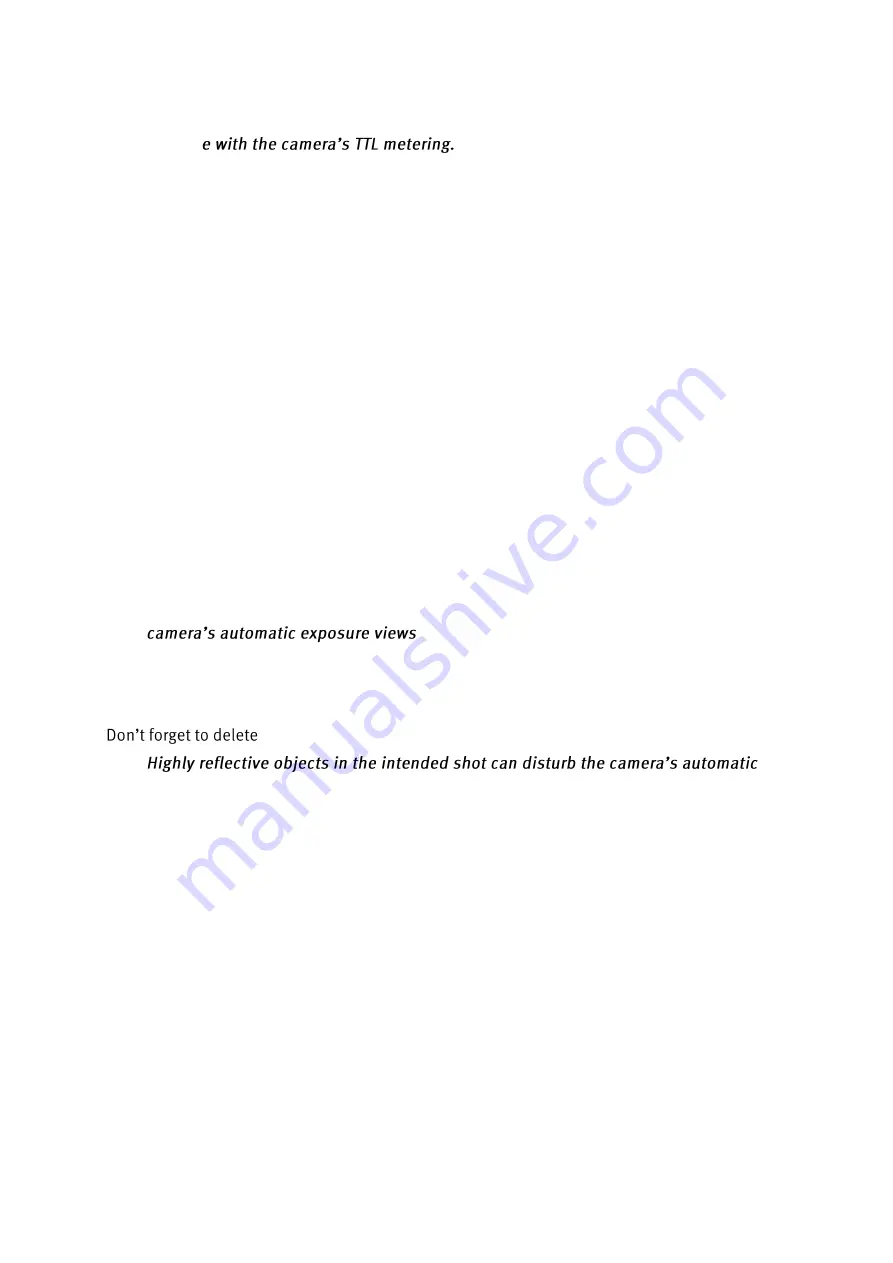
13
Ensure that the backlight source is not shining directly into the lens. This will
interfer
There is no adjustment or display for automatic TTL fill-in flash on the flash unit in this
instance.
6.3 Manual flash exposure correction in TTL flash mode
This function has to be configured on the camera, see camera operating instructions.
The automatic flash in most cameras is set to 25% reflectance (average reflectance of flash
subject).
A dark background which absorbs a lot of light or a light background which is heavily reflective
(e.g. backlit shots) can cause the subject to be over or underexposed.
To compensate for the above effect, the flash output can be adjusted manually with the
correction value of the shot.
The correction value is based on the contrast between the subject and the background.
Hint:
A dark subject in front of a light background = positive correction value.
A light subject in front of a dark background = negative correction value.
Exposure correction through alteration of the lens aperture is not possible, as the
the altered aperture as the normal working one.
Manual flash exposure correction in TTL flash modes can only take place if
thecamera supports this feature (see camera's manual).
the TTL exposure correction on the camera after the shot.
exposure. This results in underexposure. Remove reflective objects or set a positive
correction value.
6.4 TTL Flash exposure memory FE
Several Nikon and Canon cameras have a flash exposure memory (FV memory). This is
supported by the flash unit in the Nikon i-TTL or in the Canon E-TTL II flash modes.
It can be used to define and store the exposure level for the subsequent shot before the shot is
actually taken.
This can be useful when, for example, the flash exposure has to be adjusted to specific details
that may not be necessarily be identical with the main subject.
The function is activated on the camera, in some instances as an individual function. The
subject detail to which the flash exposure is to be adjusted is sighted and brought into focus
with the AF sensor/metering window in the camera.


























